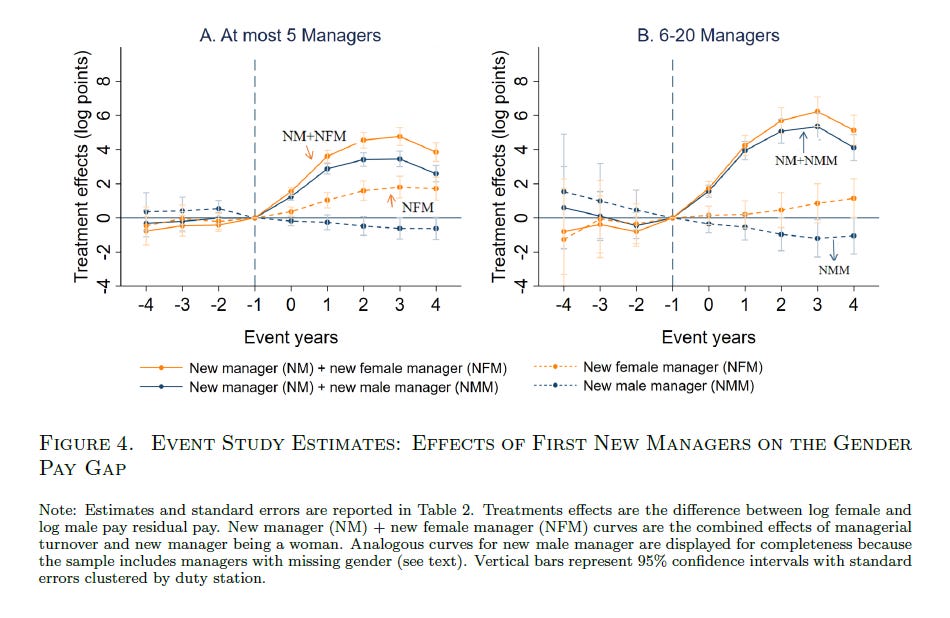Closing the Gender Pay Gap in the US Federal Service: The Role of New Managers
Closing the Gender Pay Gap in the US Federal Service: The Role of New Managers
Author: Nicole M Fortin
Author: Mila Markevych
Author: Marit Rehavi
Abstract: This paper estimates the effects of managerial turnover on the unexplained gender pay gap in the US Federal civil service from 1982-2014. Using an event study design focusing on the arrival of the first new manager at the employee’s duty station, we find that changes in managerial teams reduce the unexplained gender pay gap by around 1.5 log points in the first year and up to 6 log points in subsequent years. Importantly, that effect is roughly 30% larger when that new manager is female. The main homophily channel operates through increases in pay grade: female employees receive almost 50% more pay grade increase following the arrival of a new female manager. We also find that women managers have the greatest effect in federal agencies, with a critical mass of women in management positions. These findings are echoed in female employees’ responses to the Federal Employee Viewpoint Survey. We conclude that even highly regimented pay systems are not immune to discretionary managerial actions, which may impact the gender pay gap.
Pages: 79
Date Added: 9/20/2022, 7:10:55 AM
Reading Notes:
Objective: To understand the role of managers in the gender pay gap by using variation from changes in managers in the US federal civil service
Importance: Managerial effects in the structured pay environment of the federal government will be an underestimate of the effects more broadly
Background: The Federal Salary Reform Act of 1962 set up the "General Schedule" GS. In 1990 a reform set locality adjustments.
20% of federal employees are paid on an alternative schedule to the GS schedule
Data & Key Variables: Administrative payroll data from OPM 1982-2014
Sample: White collar, salaried, permanent employees, employed 5+ years. Offices with at least 15 employees
Place of employment info: agency, subagency, duty station
Job info: occupation, manager/supervisor/employee, full-time/part-time
Pay info: schedule, step, grade, quarterly pay
HR data from hire/separation date: age, education, reason for separation. Gender imputed from name
Federal Employee Viewpoint Survey (FEVS)
Methodology: Event study around entry of a new manager
Preferred sample: at most 5 managers
Dependent variable: log pay residuals, controlling for locality and observable characteristics
Treatment= first new manager. Future managerial changes not used as additional treatments
Results: Managerial turnover reduces the gender pay gap by 3.5 log points over 4 years for new male managers and almost 5 log points for new female managers
All employees have more pay grade increases with the arrival of a same-gender manager, but female employees benefit twice as much
Key Table/Figure:

